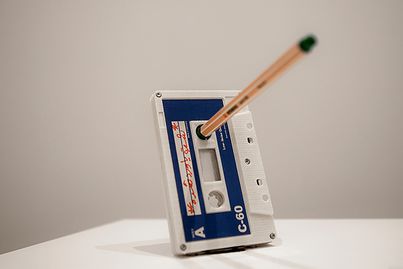“How to find meaning in dead time”
With works by Adel Abidin, Anna Kutera, Anri Sala, Bady Dalloul, Bodo Pagels, Dana Enani and Nadine El Banhawy, Dorothee Wenner, Filipa César with Sana na N’Hada and Zé Interpretador, Fiona Tan, Haytham El-Wardany, Kamal Aljafari, Lawrence Abu Hamdan, Maria Iorio and Raphaël Cuomo, Martin Ebner, Nihad Kreševljaković and Clarissa Thieme, Randa Megahed, Sanaz Sohrabi, Walid Raad, and others.
Curated by Kayfa ta (Maha Maamoun and Ala Younis)
Aug 26 until Sep 12, 2021 at SAVVY Contemporary, Opening Sep 26, 2021 19:00
What is dead time? In physics, it’s a technical term referring to the time that passes unrecorded by our detection systems due to a technical lag in the recording device. As such, dead time is unrecorded time. In history, dead time may refer to time that has disappeared from the records, due to a deliberate act of deletion, because it has been deemed unworthy or incongruous with the desired canonization of history. It may also refer to time that goes unaccounted for because the records attesting to its existence are no longer materially present, concealed by loss or decay. Moreover, the records of this time may be of a nature that is unreadable by our devices; records in minor languages, voiced by unacknowledged subjects or subjectivities, and contained in subsidiary media. Alternatively, dead time may be time that has wilfully withdrawn from our reach, “playing dead” in wait for a more opportune time to reinsert itself into the purview of the living. In all the above cases, time is not dead in itself, it is only insular to us because of our inability to attend to it.
1. If you sit in your room for hours on end with nothing to do, place an empty cassette tape in the player and press the record button.*
This exhibition contains fragments of time that are inert, have escaped the record or are in the process of resurrecting from their transitory host media. These host media include but are not limited to: 16mm films, 3D-printed cassette tapes, CCTV footage, colonial photo archives, human bodies, a jeweller’s closet, matchboxes, VHS tapes, the vaults of the Louvre museums, VHS tapes, a Persian carpet and others. More than a finite collection of material that we visit and employ, this archive of temporalities is also an immaterially expansive being that chose to visit and employ us, animating our bodies and possibly expanding our narratives of self, place and time.
7. Listen one more time. Note that what you are hearing is the sound of long, empty hours, and that the new-found meaning that you have gradually grown accustomed to is that very emptiness you had been experiencing, now abstracted from your feelings, and thoughts, and presence. You will discover that emptiness is not in itself an absence of all meaning, but rather your inability to understand new meaning.**
* The title of the exhibition and this excerpt are from “How to find meaning in dead time,” one of the exercises in the manual by Haytham El-Wardany, How to disappear (Cairo: Kayfa ta, 2013), 23.
** Ibid, 24.
Informations about all works can be found in the festival program (download PDF).
